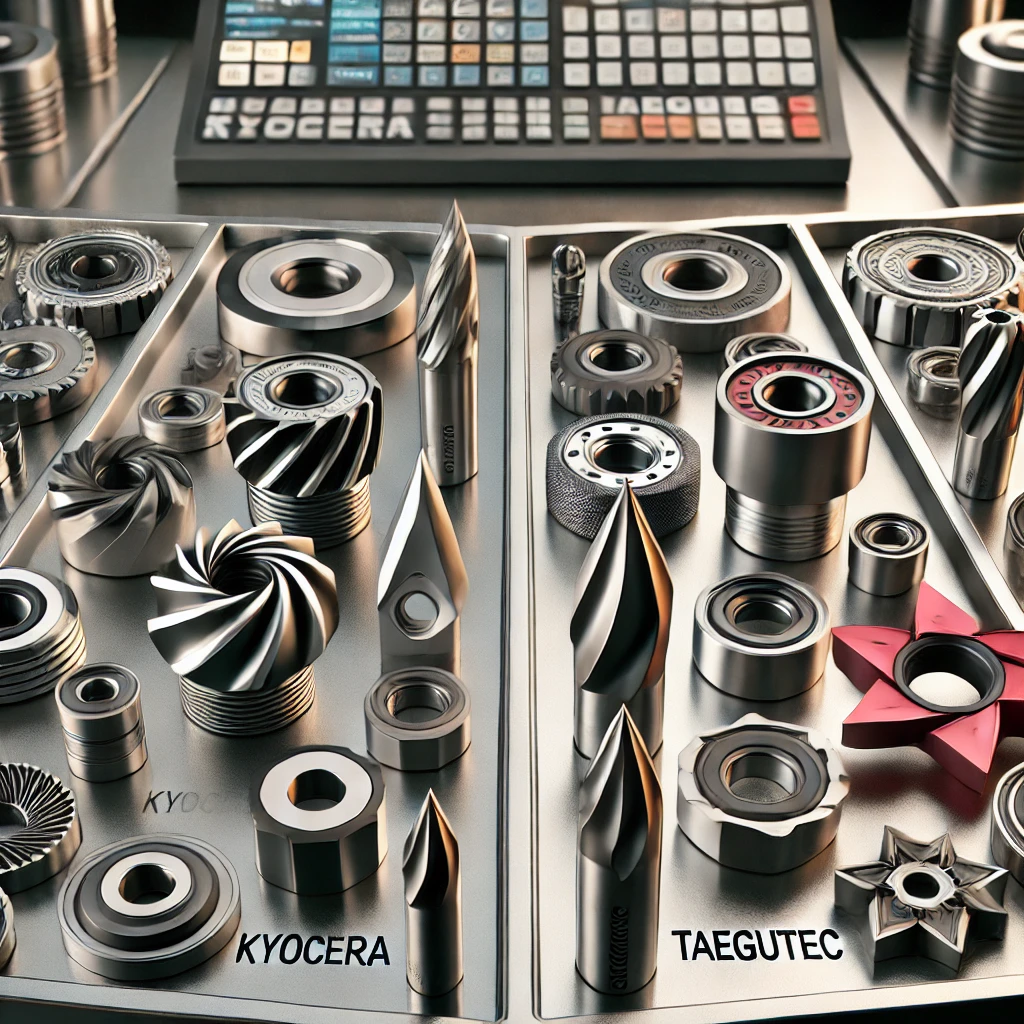Kyocera vs. TaeguTec: An In-Depth Comparison of Carbide Inserts
Here's a detailed comparison among Kyocera & TaeguTec

Carbide inserts are critical components in CNC machining, affecting efficiency, precision, and tool life. Among the top manufacturers, Kyocera and TaeguTec stand out for their innovative cutting tools and high-performance carbide inserts. If you're looking to choose between Kyocera and TaeguTec, this guide will help you understand their differences, strengths, and best applications.
Company Overview
Kyocera
Founded in 1959 in Japan, Kyocera has built a strong reputation for advanced ceramic and carbide cutting tools. Kyocera’s inserts are known for their durability, high-speed performance, and versatility across various materials.
Key Strengths:
-
Expertise in ceramic and carbide materials
-
High-performance coatings for extended tool life
-
Strong presence in automotive and aerospace industries
TaeguTec
A subsidiary of the IMC Group (which includes brands like Iscar and Tungaloy), TaeguTec is a South Korean company with a significant presence in metal cutting tools. TaeguTec focuses on high-efficiency solutions and innovative geometries for various machining applications.
Key Strengths:
-
Strong R&D focus on insert geometries
-
Cost-effective solutions with high-performance levels
-
Excellent chip control technology
Performance Comparison
1. Material Compatibility
| Material Type | Kyocera Strengths | TaeguTec Strengths |
|---|---|---|
| Steel | Excellent wear resistance, long tool life | High-speed machining performance |
| Stainless Steel | PVD-coated inserts for precision | Strong chip control and heat resistance |
| Cast Iron | Durable and efficient for roughing | Strong inserts for heavy-duty operations |
| Aluminum | Polished inserts for smooth finishing | Optimized cutting edge for aluminum |
| Exotic Alloys | Ceramic and cermet options available | High heat resistance and specialized coatings |
2. Coating Technologies
-
Kyocera: Uses a range of coatings, including CVD and PVD, with proprietary technologies like MEGACOAT for increased wear resistance and high-speed performance.
-
TaeguTec: Offers specialized coatings such as GoldRush, which enhances tool durability and improves cutting efficiency under harsh conditions.
3. Insert Geometries and Edge Preparation
-
Kyocera: Offers a balanced approach to edge preparation, focusing on reduced tool wear and extended life.
-
TaeguTec: Prioritizes aggressive chip breaker designs for high-speed and heavy-duty applications.
4. Tool Life and Cost Efficiency
-
Kyocera tends to have slightly longer tool life, especially in precision applications.
-
TaeguTec provides a more cost-effective solution with competitive pricing and high efficiency.
5. Industry Applications
| Industry | Kyocera Preference | TaeguTec Preference |
| Automotive | High-speed machining, finishing | Heavy-duty machining, roughing |
| Aerospace | High-precision cutting | Heat-resistant coatings |
| General Machining | Versatile insert options | Strong chip control for various operations |
| Oil & Gas | Durable inserts for tough materials | High-performance carbide grades |
Pros and Cons
Kyocera Pros:
✅ High-speed performance
✅ Excellent coatings for wear resistance
✅ Reliable tool life for precision machining
Kyocera Cons:
❌ Slightly more expensive
❌ Limited aggressive chip breaker options
TaeguTec Pros:
✅ Cost-effective pricing
✅ Strong chip breaker designs
✅ High-performance in roughing and heavy-duty machining
TaeguTec Cons:
❌ Slightly shorter tool life in some applications
❌ Limited cermet and ceramic insert options
Choosing the Right Carbide Insert Brand
-
For high-speed and precision machining: Choose Kyocera.
-
For roughing and heavy-duty operations: TaeguTec is a strong contender.
-
For cost-effective machining solutions: TaeguTec provides better affordability.
-
For aerospace and exotic material applications: Kyocera’s ceramic and cermet inserts are ideal.
Conclusion
Both Kyocera and TaeguTec offer high-quality carbide inserts, but the right choice depends on your specific machining needs. If you prioritize tool life and precision, Kyocera is an excellent option. If you need aggressive chip control and cost-effective solutions, TaeguTec is a great alternative. By considering your machining requirements, material compatibility, and budget, you can make an informed decision for optimal CNC performance.



